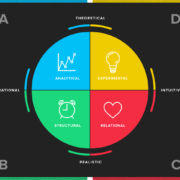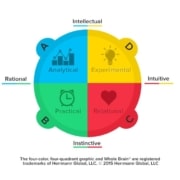Time for a Leadership Development Detox?
Time for a Leadership Development Detox?
Detox is a word that is often talked about in health circles. In more recent times the idea of a detox has moved from ‘diets’ to other areas to support our mental health, such as a ‘digital detox’ to get us away from our devices and minimise the overload of white noise being thrown at us via the internet and social media. But have you ever stopped to think about a leadership development detox for yourself or your organisation?
What is the purpose of leadership development anyway? Are our leaders expected to know too much? What is the right leadership training for our situation? Do we have strategic objectives in place to hang our leadership competency framework off of? What leadership training do we give our executive leadership team versus other senior managers and line managers? Wow, a new best seller on leadership development, I had better read that one. It all becomes a minefield of questions really quickly.
Regardless of how capable our senior leaders are, there is always areas for improvement. That is why each year, thousands of resources are presented to us such as leadership development programs, online leadership assessment tools, online courses for leadership, books on leadership and many other resources that deal with self-help, leading self and leading teams. So much choice can create confusion about what problem we are trying to solve, so let’s press pause, get out a blank piece of paper and start a leadership development detox for our self (or our organisation).
What problem are we trying to solve?
Let’s acknowledge that leadership development is about helping leaders reach their full potential. Leadership development experts at The Leadership Sphere use a framework that considers three important areas that we can reflect on:
Clarity – are we being clear or unclear to our leaders, to our managers and to our teams? In other words, are our strategic objectives clear and are we communicating this in a way that resonates at every layer in our organisation?
Capability – have we the capability to do what we need to do, or is there skill gaps that we can work on with our people? Saying we have a leadership capability issue is a cop out… instead we need to consider where the capability gaps are and that can take us down the path of understanding the right leadership development for the right group of people. Of course, it is not a one size fits all approach to leadership training and coaching agenda is important.
Contribution – how are the contributions at every level of leader in our organisation and what can we be doing to better support them?
When we start asking these questions in the context of what is really going on in the workplace it becomes clear as to why so many leaders feel like they’re drowning in their responsibilities and expectations of them as a senior leader. Between managing the business, staying reasonably current in their functional skills, and trying to be a good manager of people, it can be hard to stay afloat. Often expectations are so high, and we are being asked to achieve more with less resources that people become overwhelmed, things become unclear, we doubt our capability and contribution diminishes. As a result, many leaders feel extremely unsatisfied in their role and it can lead to less than desirable performance and in some cases burnout and mental health issues. Think about it. We ask individuals in leadership positions to be highly emotionally intelligent and excellent team players in addition to being enterprise leaders, situational leaders, transformative leaders, servant leaders, collaborative leaders, virtual leaders, strategic leaders; it’s a pretty long list of areas to be an ‘expert in’. Starting to sound like a leadership development detox is on the menu?
If we are going to help leaders reach their leadership potential and to be satisfied in the process, we need to focus on what constitutes good leadership. Here is a list of questions that can get you started.
- Are we clear about our strategic objectives and what we are trying to achieve?
- Do we communicate these objectives clearly to our people?
- Does everyone understand (and live) our values?
- What is overperformance, full performance and underperformance and what are the impacts of each (to the organsiation and to our people)?
- Do we coach and give people feedback well?
- Do we collaboratively solve problems and make decisions?
- Do we delegate tasks and responsibilities effectively?
- Do we mediate and resolve conflicts and differences constructively?
- Do we spend enough time observing, listening, asking questions?
- Do our leaders maintain composure during times of adversity?
- How do we operate in an emergency?
- Are we encouraging people to cooperate as part of the broader team?
- Are we flexible in our approach (i.e. are we adaptable to meet the changing needs of our people and our clients)?
- Are you overwhelmed just by thinking of this long list of questions? Ok we will stop now!
A big part of your leadership development detox is to write down all the questions you can think of… think about clarity, capability and contribution in the process… think about it top down from strategy through to day to day tasks. Once you have done this brain storm, then for each question, simply answer two things, what effort would it take to get it right, what impact would that have on the results of our organisation. This is a simple effort versus impact exercise. Then of course, once you have done that we can apply the Pareto Principle and look to build a leadership development program that addresses the 20% of our questions that we believe will give us 80% of the result. You will find that your solution is not just about the next best leadership book, or leadership course on the market, but rather a longer term approach to building in a combination of leadership assessments, leadership workshops and coaching for leaders along the way.
At The Leadership Sphere one of our most popular programs is the Dare to Lead Program where we encourage leaders to consider a simple statement of ‘CLEAR IS KIND’… ‘UNCLEAR IS UNKIND’ which interestingly gets us thinking about the amount of time we waste in the world of unclear and what a difference it makes when we start to think about CLARITY first. We encourage you to think about all leadership development and executive coaching programs using this. That is, start by having the courage to focus on being clear and then take the next step into building a high performance leadership program.
For more information about The Leadership Sphere and how we can support your leaders with leadership development, executive coaching and high performance team programs please visit our website or call us on 1300 100 857.
Let us help you find what you’re looking for!

















